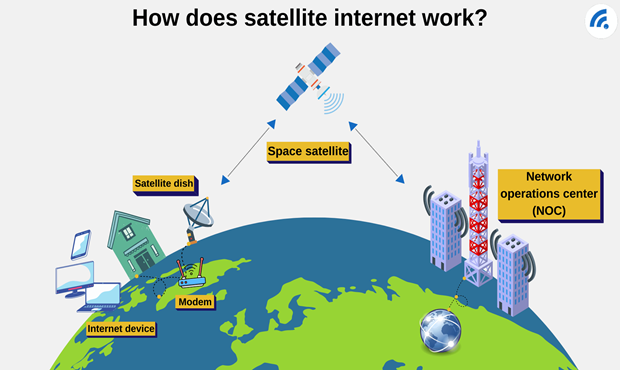Starlink project launched by SpaceX with a satellite constellation system in Low Earth Orbit aims to deliver global internet coverage.
About Satellite Internet Services

- Definition: Satellite internet or satellite broadband, is a wireless internet connection provided through communication satellites orbiting the Earth.
- Significance
- Bridging the Digital Divide: Offers location-independent connectivity, reaching remote regions.
- Boost to Disaster Management: Provide communication support in disaster-prone or geographically difficult areas (e.g., Siachen, North-East India).
- Support for Emerging Technologies: Facilitates adoption of IoT, telemedicine, distance education, and smart agriculture in rural India.
- Military and National Security Applications: Already used by the Indian Army (e.g., Siachen Glacier) for robust internet access in high-altitude regions.
- Challenges
- High Cost for End-Users: Much costlier than traditional broadband, limiting rural affordability.
- Demand-Supply Imbalance: Urban areas already have cheaper, faster broadband alternatives.
- Infrastructure & Technical Barriers: High satellite and terminal costs; latency and bandwidth concerns.
- Other: Data Security Concerns, regulatory hurdles, National Security Issues etc.
- Way Forward:
- Using satellite internet as a complementary solution: Focusing on rural, remote, and areas susceptible to disasters
- Hybrid models: To maximize efficiency, hybrid models combining satellite and terrestrial networks can be used.
- Ensure affordability: Reduce hardware costs, localise pricing, and collaborate with Indian telecom companies.





